Concentration Increase of Atmospheric Carbon Dioxide (CO₂)
Timeplot of increase of atmospheric Carbon Dioxide (CO2) concentrations relative to the pre-industrial CO2 long-term mean value of 278ppm. During 2021, atmospheric CO2 concentrations reached a record-level increase of 50% relative to pre-industrial CO2 levels.
Using the complete record of Mauna Loa CO2 monthly mean data, the timeplot featured on this page displays the ongoing Keeling’s research and observations: the monthly average of atmospheric CO2 concentration values, which show the seasonal cycle of CO2 (jagged/wavy red line) and the seasonally-adjusted mean values (adjusted/straight red line). The jagged/wavy red line visualizes natural oscillations caused by plant growth cycles, while the adjusted/straight red line demonstrates the steady increase over time that is caused by human activities, such as the burning of fossil fuels.
To illustrate the significance of the steady increase of atmospheric CO2 since 1958 and to provide a visual understanding of the monthly average CO2 values as they are measured in parts per million (ppm):
- Monthly CO2 values are plotted on the range of [0-500] ppm over the period of March 1958 to December 2021 (present).
- The pre-industrial CO22 average of 278 ppm is marked as an orange block.
- As time passes the monthly adjusted percent increase is calculated relative to the pre-industrial CO2 value of 278ppm and is shown next to a red arrow.
In addition to highlighting the steady increase of CO2 in the Earth’s atmosphere, this timeplot underpins the historical contributions of the Keeling Curve to climate science, as it was designated a National Historic Chemical Landmark by the American Chemical Society in 2015. Continuous and precise observations across agencies and institutions are critical to help scientists and the public understand the linkages between increases in CO2 and human-caused climate change.
The rest of this webpage offers a version of the timeplot with dark background, the Keeling Curve, as of December 2021 and data sources.
Timeplot of increase of atmospheric Carbon Dioxide (CO2) concentrations relative to the pre-industrial CO2 long-term mean value of 278ppm. During 2021, atmospheric CO2 concentrations reached a record-level increase of 50% relative to pre-industrial CO2 levels. This version is created with a dark background.
![Keeling Curve for the period March 1958-December 2021 (present). Monthly Carbon Dioxide (CO2) values are plotted on the range of [300-450]ppm. On December 2021, the seasonally-adjusted mean value of CO2 reached 417.41ppm.](/static/svs/images/no_preview_web_black.png)
Keeling Curve for the period March 1958-December 2021 (present). Monthly Carbon Dioxide (CO2) values are plotted on the range of [300-450]ppm. On December 2021, the seasonally-adjusted mean value of CO2 reached 417.41ppm.
Data Sources:
- Trends in Atmospheric Carbon Dioxide by NOAA. The visualization featured on this page utilizes the complete record from the Mauna Loa CO2 monthly mean data for the period March 1958-December 2021 (accessed: January 7, 2022). Within the data record the continuous monthly average values are represented in the visualization as the jagged/wavy line that shows the seasonal cycle of CO2 and the monthly de-seasonalized mean values are represented in the visualization as the adjusted line.
Citation: Dr. Pieter Tans, NOAA/GML (gml.noaa.gov/ccgg/trends/) and Dr. Ralph Keeling, Scripps Institution of Oceanography (scrippsco2.ucsd.edu/).
Citation: Keeling, Ralph F; Keeling, Charles D. (2017). Atmospheric Monthly In Situ CO2 Data - Mauna Loa Observatory, Hawaii (Archive 2021-09-07). In Scripps CO2 Program Data. UC San Diego Library Digital Collections. https://doi.org/10.6075/J08W3BHW
Credits
Please give credit for this item to:
NASA's Scientific Visualization Studio
-
Visualizers
- Helen-Nicole Kostis (USRA)
- Andrew J Christensen (SSAI)
-
Producer
- Mark SubbaRao (NASA/GSFC)
-
Technical support
- Laurence Schuler (ADNET Systems, Inc.)
- Ian Jones (ADNET Systems, Inc.)
- Eric Sokolowsky (Global Science and Technology, Inc.)
Release date
This page was originally published on Wednesday, January 12, 2022.
This page was last updated on Wednesday, February 21, 2024 at 12:14 AM EST.
Papers used in this visualization
Keeling C.D. et al. (2005) Atmospheric CO2 and 13CO2 Exchange with the Terrestrial Biosphere and Oceans from 1978 to 2000: Observations and Carbon Cycle Implications. In: Baldwin I. et al. (eds) A History of Atmospheric CO2 and Its Effects on Plants, Animals, and Ecosystems. Ecological Studies (Analysis and Synthesis), vol 177. Springer, New York, NY. https://doi.org/10.1007/0-387-27048-5_5
C. D. Keeling, S. C. Piper, R. B. Bacastow, M. Wahlen, T. P. Whorf, M. Heimann, and H. A. Meijer, Exchanges of atmospheric CO2 and 13CO2 with the terrestrial biosphere and oceans from 1978 to 2000. I. Global aspects, SIO Reference Series, No. 01-06, Scripps Institution of Oceanography, San Diego, 88 pages, 2001. http://escholarship.org/uc/item/09v319r9
Datasets used in this visualization
-
Trends in Atmospheric Carbon Dioxide (Mauna Loa CO2 monthly mean data)
ID: 1133Credit: Dr. Pieter Tans, NOAA/GML (gml.noaa.gov/ccgg/trends/) and Dr. Ralph Keeling, Scripps Institution of Oceanography (scrippsco2.ucsd.edu/).
This dataset can be found at: https://gml.noaa.gov/ccgg/trends/data.html
See all pages that use this dataset
Note: While we identify the data sets used in these visualizations, we do not store any further details, nor the data sets themselves on our site.
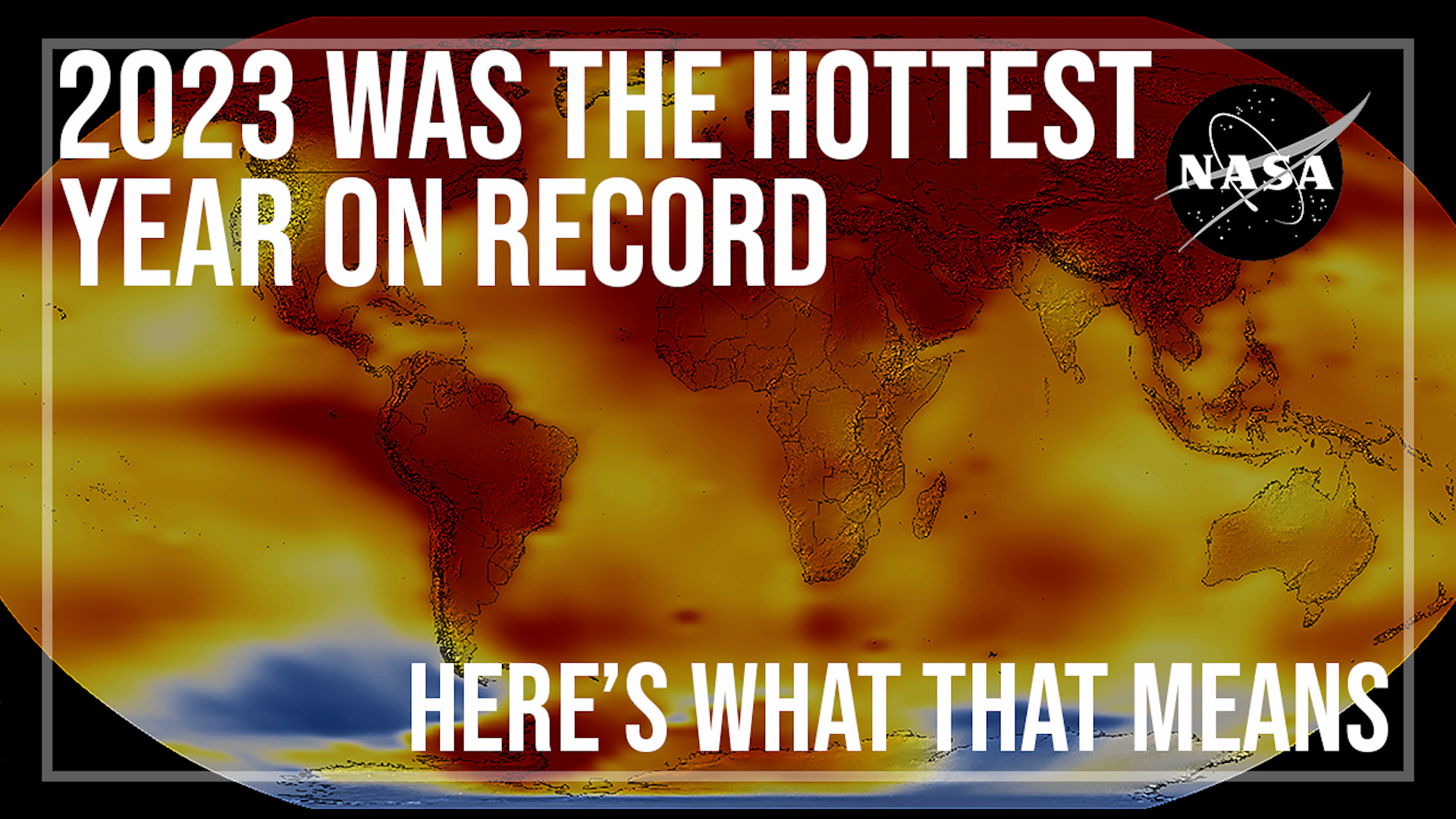
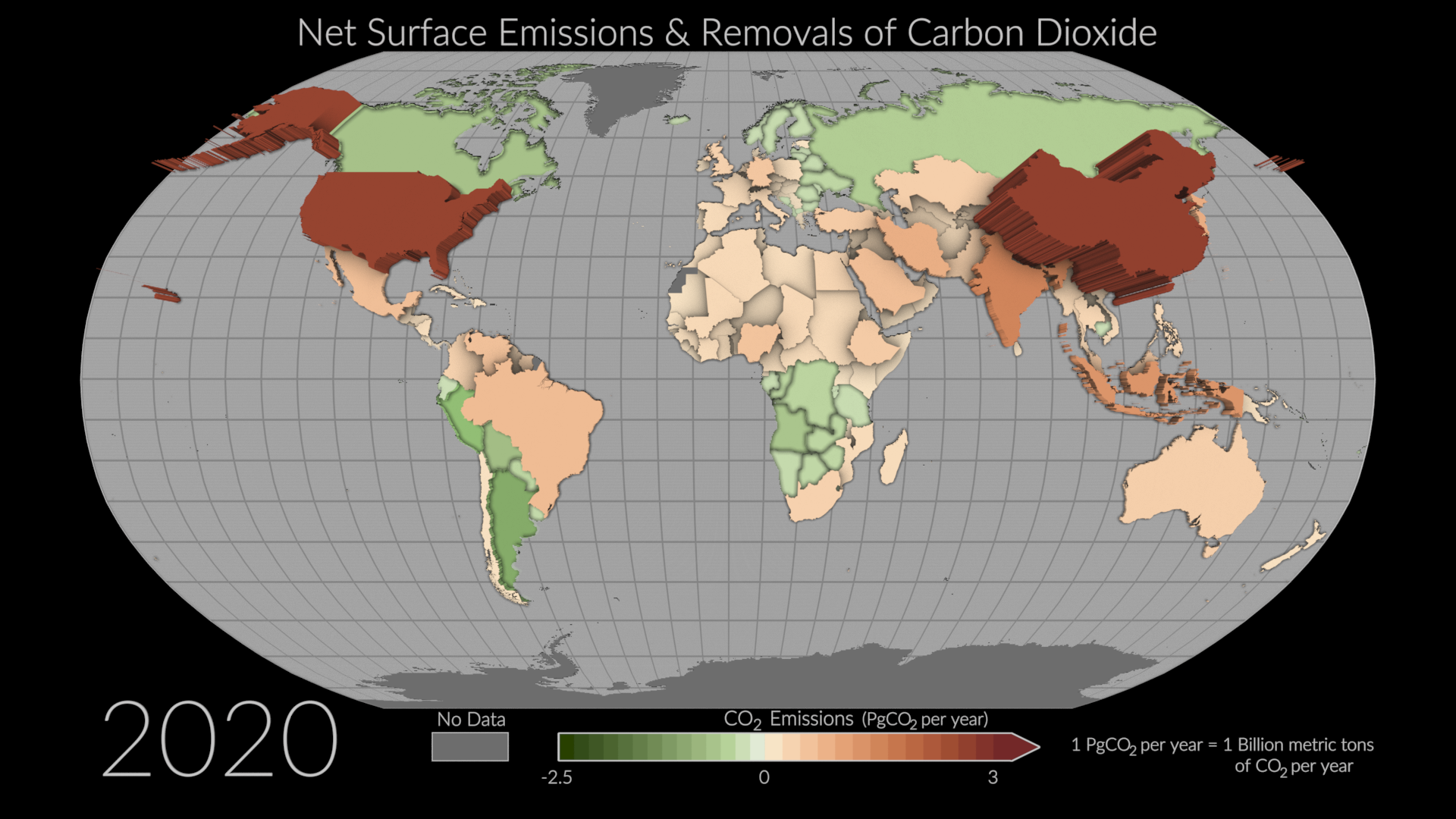
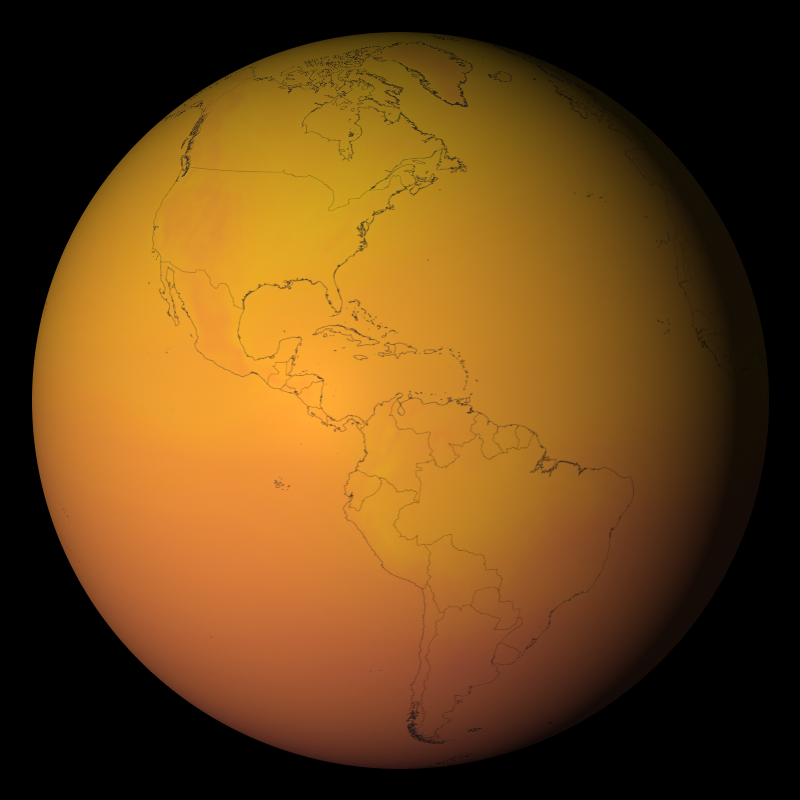
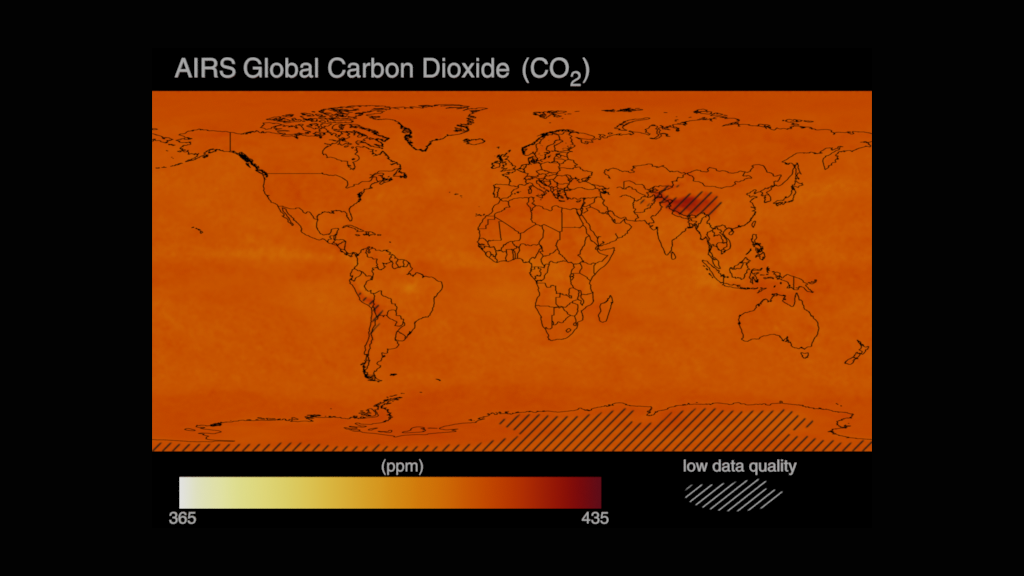

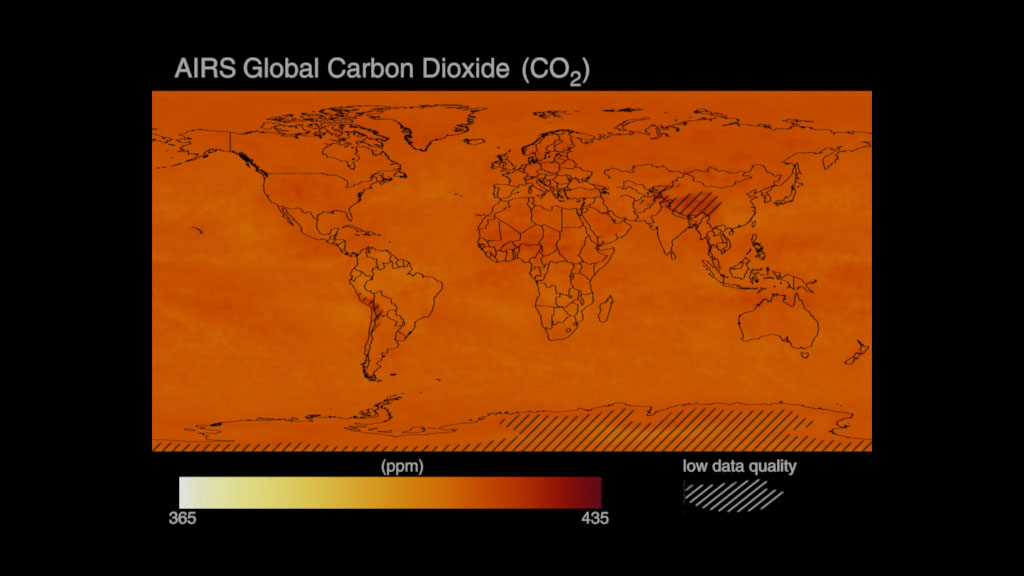
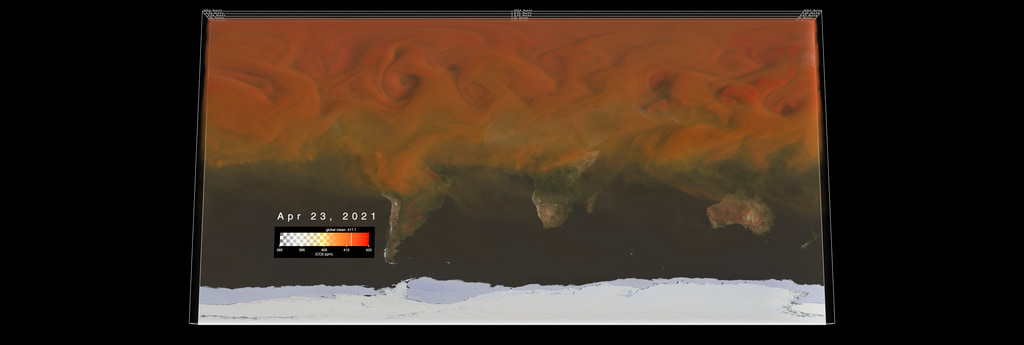
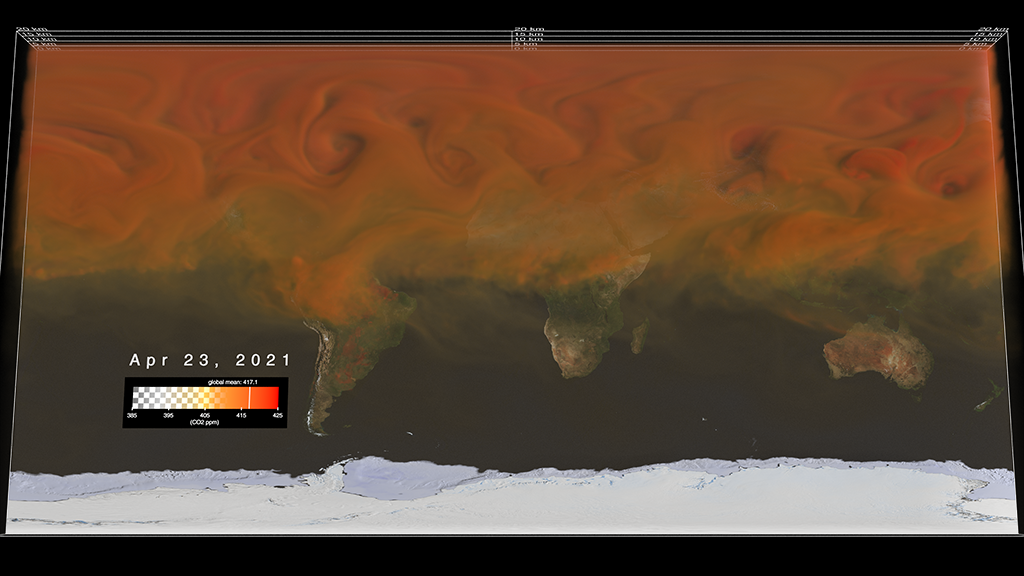
![Universal Production Music: Knock and Wait (Instrumental) by Brice Davoli [SACEM], Well That’s Difference (Instrumental) by Jeff Cardoni [ASCAP], Wanna Be Hipster (Instrumental) by Jeff Cardoni [ASCAP], Curiosity Killed Kitty (Instrumental) by Robert Leslie Bennett [ASCAP], Eco Issues (Instrumental) by Max van Thun [GEMA] Additional Footage: Pond5.com, CSPANComplete transcript available.](/vis/a010000/a014000/a014066/Title.jpg)